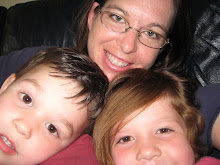Resource Materials:
Pennypacker, Sara. Stuart's Cape. Illus. Martin Matje. New York: Scholastic, 2002.
Target Audience:
3rd Grade
Discussion:
By the third grade, students should be able to listen critically to interpret and evaluate material presented in class. The line between fantasy and reality is not always easy for students to discern, and Pennypacker blends the two seamlessly in Stuart's Cape. In this craft lesson, students will use critical listening and thinking skills to pick out events of fantasy as opposed to the events that could really happen.
How to Teach It:
After reviewing comprehension strategies like visualization, self-questioning and evaluating, read one chapter of Stuart's Cape aloud to the class. On a chart tablet, make a "real" column and a "fantasy" column, and remind students that "real" means it could happen in real life and "fantasy" means it could not really happen. Give students a chance to share orally what they remember from the story and whether or not it was real or fantasy. The students then write their responses in the appropriate column on the chart tablet. Repeat the process each day of the week, combining the last two chapters. Each day before reading time review the previous days' chart tablet entries to help students focus on the story and the concept of real vs. fantasy.
3rd Grade Standards Taught:
1) listening critically to interpret and evaluate, 2) listening responsively to stories and other texts read aloud, 3) distinguish fiction from nonfiction, including fact and fantasy, 4) ask and answer relevent questions and make contributions in small or large group discussions.
